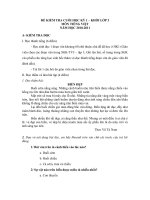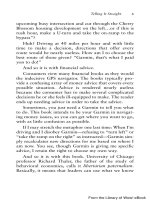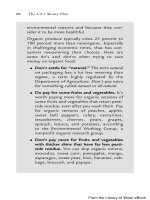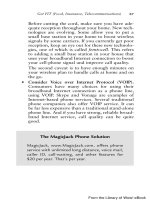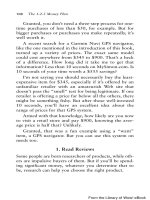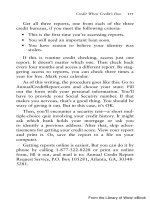stat153 assignment 3 due october 1 2010
Bạn đang xem bản rút gọn của tài liệu. Xem và tải ngay bản đầy đủ của tài liệu tại đây (28.01 KB, 1 trang )
<span class='text_page_counter'>(1)</span><div class='page_container' data-page=1>
Stat153 Assignment 3 (due October 1, 2010)
1. (Prediction operator)
Show that the prediction operator defined in lectures,P(Y<sub>|</sub>Z) = the best linear predictor ofY given
Z, is linear inY:
P(α1Y1+α2Y2|Z) =α1P(Y1|Z) +α2P(Y2|Z).
2. (Linear prediction)
Suppose that {Xt}is an AR(1) process, we have observedX1 and X3, and we would like to estimate
the missing valueX2. Find the best linear predictor ofX2 givenX1 andX3.
3. (Linear prediction)
Shumway and Stoffer problem 3.14.
4. (ACF, PACF, and forecasting)
Consider the time series data in the filesunspot.daton the website. It consists ofn= 285 observations
of the number of sunspots, from 1700 to 1984. This is a quantity that is believed to affect our
weather patterns. This time series has been studied by many authors, including Yule (Philosophical
Transactions of the Royal Society of London, Series A, 226:267–298, 1927) and Brillinger and Rosenblatt
(Spectral Analysis of Time Series, B. Harris (Ed.), pp 153–188, Wiley, 1967).
We will study the square root of the data (this transformation ensures that the variance is roughly
constant). That is, for the series Z1, . . . , Zn from the file sunspot.dat, first compute the seriesXt=
√
Zt, and work with the series{Xt}in what follows.
(a) Compute the sample ACF and the sample PACF for this series.
(b) By considering the sample ACF and sample PACF, decide which of the following would be
ap-propriate for this data:
AR(1), AR(2), MA(1) or MA(2).
Use the data to estimate the parameters of the model that you choose.
(c) Using your fitted model, calculate forecastsXn
n+h, forh= 1,2,3,4. Calculate the 95% prediction
intervals (assuming Gaussian noise).
(d) The filesunspot2.daton the website includes the number of sunspots for the years 1985 to 1988.
Plot all of the data, and your forecasts and prediction intervals for the last four years. (Don’t
forget to undo the square root transformation by taking the square of your predictions.)
</div>
<!--links-->

